Dynamics of the Aggregation of Cells with Internal Oscillators
Abstract
1. Introduction
1.1. Overview
1.2. Previous Work on Aggregation and Synchronization
1.3. Our Model and Results
2. Model Description
2.1. Overview
2.2. Implementation and Analysis
3. Quantitative Results
3.1. Parameter Sweep
3.2. Number of Aggregates
- smolu(1)We assumed for all , i.e., the aggregation rates are independent of the sizes of the clusters; we denoted this rate by . This leads to the equation , which has the solutionNote this model has two parameters: The constant aggregation rate and the initial number of aggregates .
- smolu(2)As a slightly more complex model, we assumed that the aggregation rate is constant for clusters of size greater than 1, but different for the aggregation rate involving clusters of size 1. In short, we had two rates given byThis gave rise to the following coupled system:Note that this simplifies to the previous model for . Solutions to this model have no readily available closed form, but the system can be solved numerically. There were four parameters: Besides the rates and , we had the initial conditions and , the total numbers of clusters and the number of clusters of size 1, respectively.
- Simple adhesive aggregation, smolu(1): , .
- Simple adhesive aggregation, smolu(2): , ,.
- Clock-dependent aggregation, smolu(1): , .
- Clock-dependent aggregation, smolu(2): , , .
3.3. Compaction
3.4. Measures of Synchronization
3.5. Discussion of Results
4. Conclusions
Supplementary Materials
Author Contributions
Funding
Data Availability Statement
Acknowledgments
Conflicts of Interest
References
- Bhat, R.; Lerea, K.M.; Peng, H.; Kaltner, H.; Gabius, H.J.; Newman, S.A. A regulatory network of two galectins mediates the earliest steps of avian limb skeletal morphogenesis. BMC Dev. Biol. 2011, 11, 6. [Google Scholar] [CrossRef]
- Du, Q.; Kawabe, Y.; Schilde, C.; Chen, Z.-H.; Schaap, P. The Evolution of Aggregative Multicellularity and Cell–Cell Communication in the Dictyostelia. J. Mol. Biol. 2015, 427, 3722–3733. [Google Scholar] [CrossRef]
- Gregor, T.; Fujimoto, K.; Masaki, N.; Sawai, S. The onset of collective behavior in social amoebae. Science 2010, 328, 1021–1025. [Google Scholar] [CrossRef] [PubMed]
- Igoshin, O.A.; Goldbeter, A.; Kaiser, D.; Oster, G. A biochemical oscillator explains several aspects of myxococcus xanthus behavior during development. Proc. Natl. Acad. Sci. USA 2004, 101, 15760–15765. [Google Scholar] [CrossRef]
- Wu, Y.; Kaiser, A.D.; Jiang, Y.; Alber, M.S. Periodic reversal of direction allows myxobacteria to swarm. Proc. Natl. Acad. Sci. USA 2009, 106, 1222–1227. [Google Scholar] [CrossRef]
- Adenis, L.; Gontran, E.; Deroulers, C.; Grammaticos, B.; Juchaux, M.; Seksek, O.; Badoual, M. Experimental and modeling study of the formation of cell aggregates with differential substrate adhesion. PLoS ONE 2020, 15, e0222371. [Google Scholar] [CrossRef] [PubMed]
- Douezan, S.; Brochard-Wyart, F. Active diffusion-limited aggregation of cells. Soft Matter 2012, 8, 784–788. [Google Scholar] [CrossRef]
- Mukhopadhyay, D.; De, R. Aggregation dynamics of active cells on non-adhesive substrate. Phys. Biol. 2019, 16, 046006. [Google Scholar] [CrossRef]
- Smoluchowski, M.V. Versuch einer mathematischen Theorie der Koagulationskinetik kolloider Lösungen. Z. Phys. Chem. 1918, 92U, 129–168. [Google Scholar] [CrossRef]
- Witten, T.A.; Sander, L.M. Diffusion-limited aggregation, a kinetic critical phenomenon. Phys. Rev. Lett. 1981, 47, 1400–1403. [Google Scholar] [CrossRef]
- Guzzo, M.; Murray, S.M.; Martineau, E.; Lhospice, S.; Baronian, G.; My, L.; Zhang, Y.; Espinosa, L.; Vincentelli, R.; Bratton, B.P.; et al. A gated relaxation oscillator mediated by frzx controls morphogenetic movements in myxococcus xanthus. Nat. Microbiol. 2018, 3, 948–959. [Google Scholar] [CrossRef]
- McBride, M.J.; Weinberg, R.A.; Zusman, D.R. “Frizzy” aggregation genes of the gliding bacterium Myxococcus xanthus show sequence similarities to the chemotaxis genes of enteric bacteria. Proc. Natl. Acad. Sci. USA 1989, 86, 424–428. [Google Scholar] [CrossRef]
- Barciś, A.; Bettstetter, C. Sandsbots: Robots that sync and swarm. IEEE Access 2020, 8, 218752–218764. [Google Scholar] [CrossRef]
- O’Keeffe, K.; Ceron, S.; Petersen, K. Collective behavior of swarmalators on a ring. Phys. Rev. E 2022, 105, 014211. [Google Scholar] [CrossRef]
- O’Keeffe, K.P.; Hong, H.; Strogatz, S.H. Oscillators that sync and swarm. Nat. Commun. 2017, 8, 1504. [Google Scholar] [CrossRef]
- Sar, G.K.; Chowdhury, S.N.; Perc, M.; Ghosh, D. Swarmalators under competitive time-varying phase interactions. New J. Phys. 2022, 24, 043004. [Google Scholar] [CrossRef]
- Iwasa, M.; Iida, K.; Tanaka, D. Hierarchical cluster structures in a one-dimensional swarm oscillator model. Phys. Rev. E 2010, 81, 046220. [Google Scholar] [CrossRef]
- Tanaka, D. General chemotactic model of oscillators. Phys. Rev. Lett. 2007, 99, 134103. [Google Scholar] [CrossRef] [PubMed]
- Glimm, T.; Gruszka, D. Modeling the interplay of oscillatory synchronization and aggregation via cell–cell adhesion. Nonlinearity 2024, 37, 035016. [Google Scholar] [CrossRef]
- Kuramoto, Y. Chemical oscillations, waves and turbulence. In Synergetics; Springer: Berlin/Heidelberg, Germany, 1984; Volume 19. [Google Scholar]
- Strogatz, S.H. From Kuramoto to Crawford: Exploring the onset of synchronization in populations of coupled oscillators. Phys. D Nonlinear Phenom. 2000, 143, 1–20. [Google Scholar] [CrossRef]
- Armstrong, N.J.; Painter, K.J.; Sherratt, J.A. A continuum approach to modelling cell-cell adhesion. J. Theor. Biol. 2006, 243, 98–113. [Google Scholar] [CrossRef]
- Una, R.; Glimm, T. A Cellular Potts Model of the interplay of synchronization and aggregation. PeerJ 2024, 12, e16974. [Google Scholar] [CrossRef]
- Bhat, R.; Glimm, T.; Linde-Medina, M.; Cui, C.; Newman, S.A. Synchronization of Hes1 oscillations coordinates and refines condensation formation and patterning of the avian limb skeleton. Mech. Dev. 2019, 156, 41–54. [Google Scholar] [CrossRef]
- Newman, S.A.; Bhat, R.; Glimm, T. Spatial waves and temporal oscillations in vertebrate limb development. Biosystems 2021, 208, 104502. [Google Scholar] [CrossRef] [PubMed]
- Glimm, T.; Bhat, R.; Newman, S.A. Modeling the morphodynamic galectin patterning network of the developing avian limb skeleton. J. Theor. Biol. 2014, 346, 86–108. [Google Scholar] [CrossRef] [PubMed]
- Alber, M.S.; Kiskowski, M.A.; Glazier, J.A.; Jiang, Y. On Cellular Automaton Approaches to Modeling Biological Cells. In Mathematical Systems Theory in Biology, Communications, Computation, and Finance; Rosenthal, J., Gilliam, D.S., Eds.; Springer: New York, NY, USA, 2003; pp. 1–39. [Google Scholar]
- Deutsch, A.; Dormann, S.; Deutsch, A.; Dormann, S. Cellular Automata, Cellular Automaton Modeling of Biological Pattern Formation: Characterization, Examples, and Analysis; Birkhäuser: Boston, MA, USA, 2017; pp. 65–111. [Google Scholar]
- Eddins, S. Revised Circularity Measurement in Regionprops (R2023a). Available online: https://blogs.mathworks.com/steve/2023/03/21/revised-circularity-measurement-in-regionprops-r2023a/ (accessed on 20 October 2025).
- Bevington, P.R.; Robinson, D.K. Data Reduction and Error Analysis; McGraw-Hill: New York, NY, USA, 2003. [Google Scholar]
- Aihara, I.; Mizumoto, T.; Otsuka, T.; Awano, H.; Nagira, K.; Okuno, H.G.; Aihara, K. Spatio-Temporal Dynamics in Collective Frog Choruses Examined by Mathematical Modeling and Field Observations. Sci. Rep. 2014, 4, 3891. [Google Scholar] [CrossRef] [PubMed]
- Fu, R.Z.; Cottrell, O.; Cutillo, L.; Rowntree, A.; Zador, Z.; Wurdak, H.; Papalopulu, N.; Marinopoulou, E. Identification of genes with oscillatory expression in glioblastoma: The paradigm of SOX2. Sci. Rep. 2024, 14, 2123. [Google Scholar] [CrossRef]
- Bussemaker, H.J. Analysis of a pattern-forming lattice-gas automaton: Mean-field theory and beyond. Phys. Rev. E 1996, 53, 1644. [Google Scholar] [CrossRef]

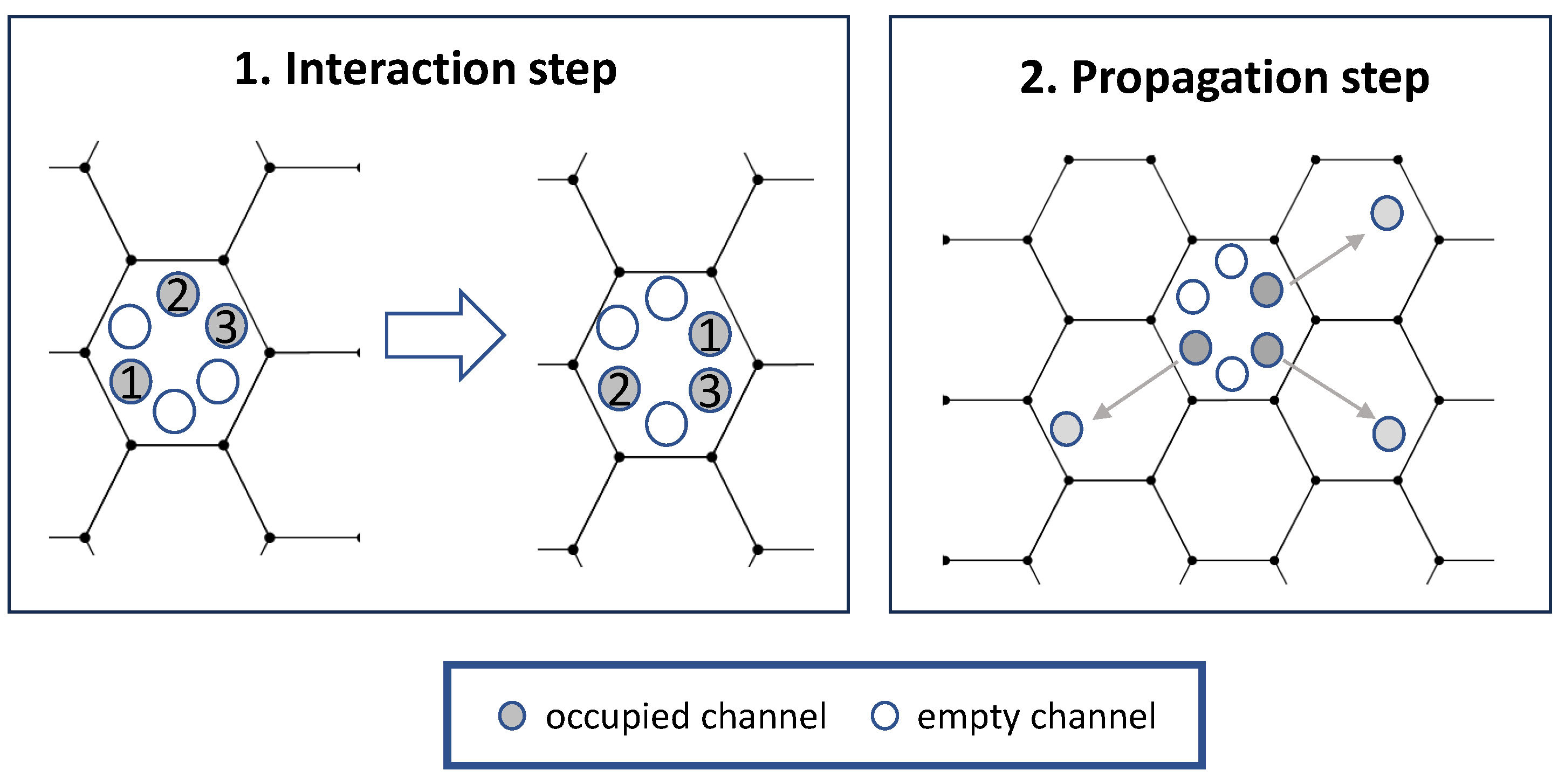
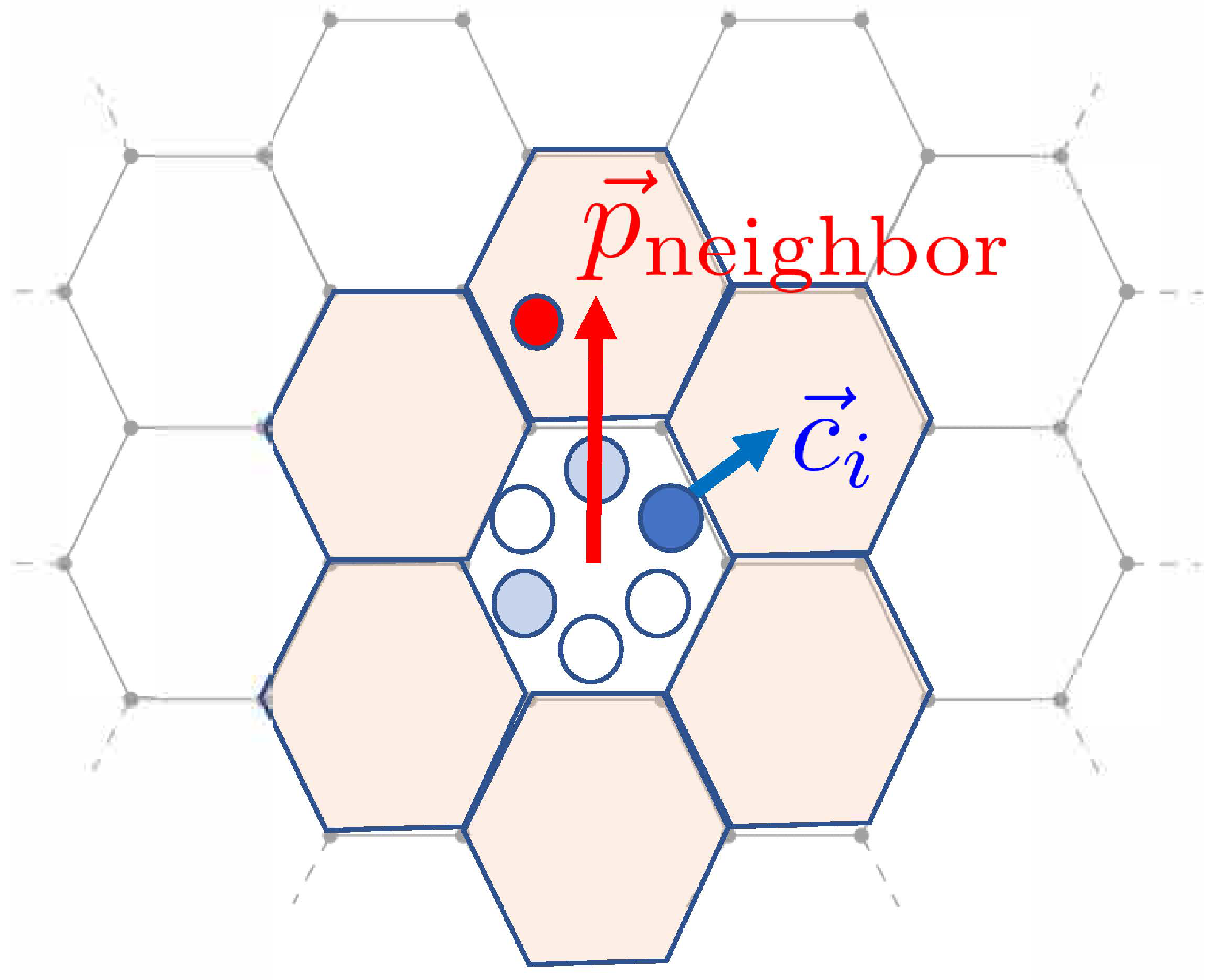
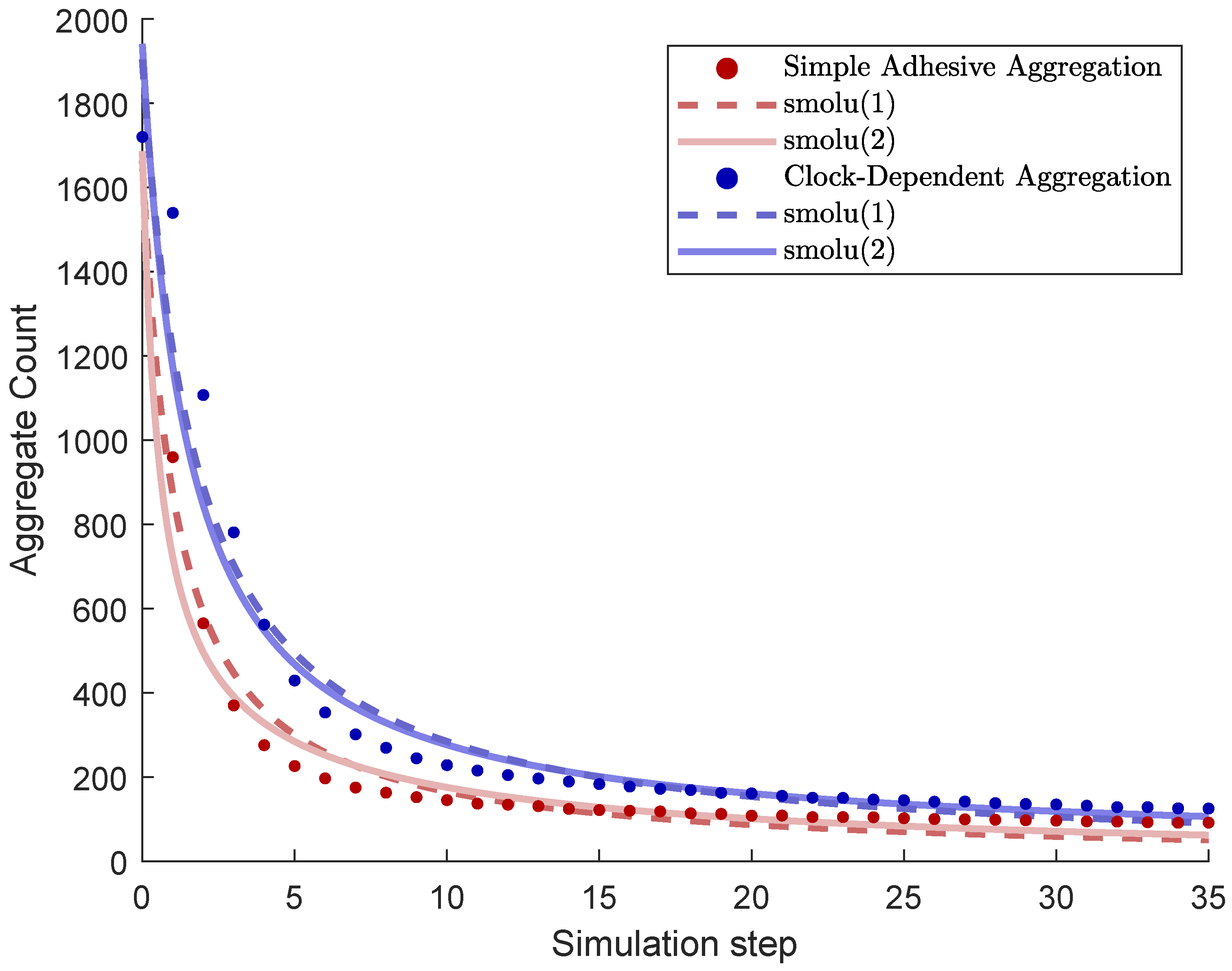
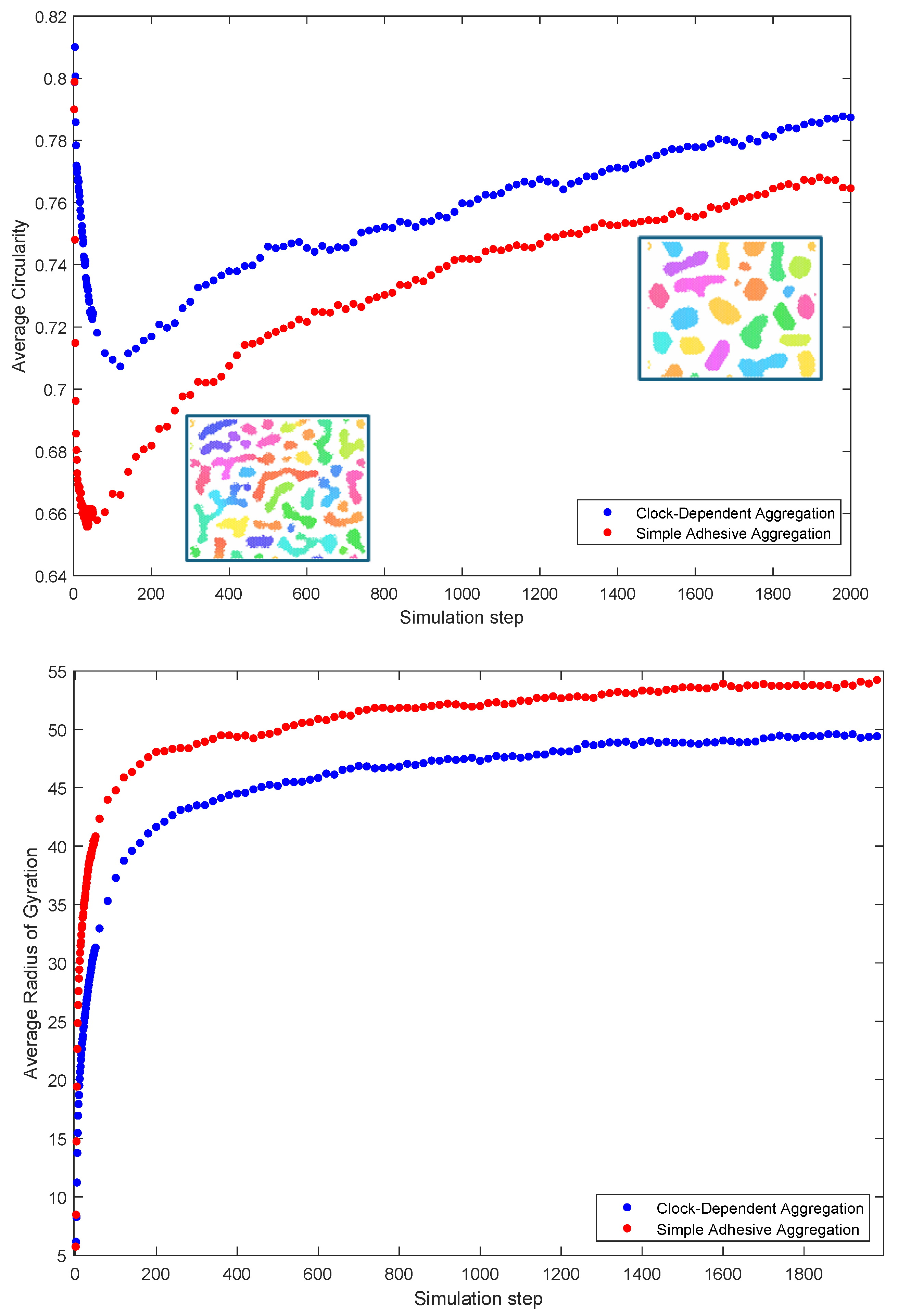
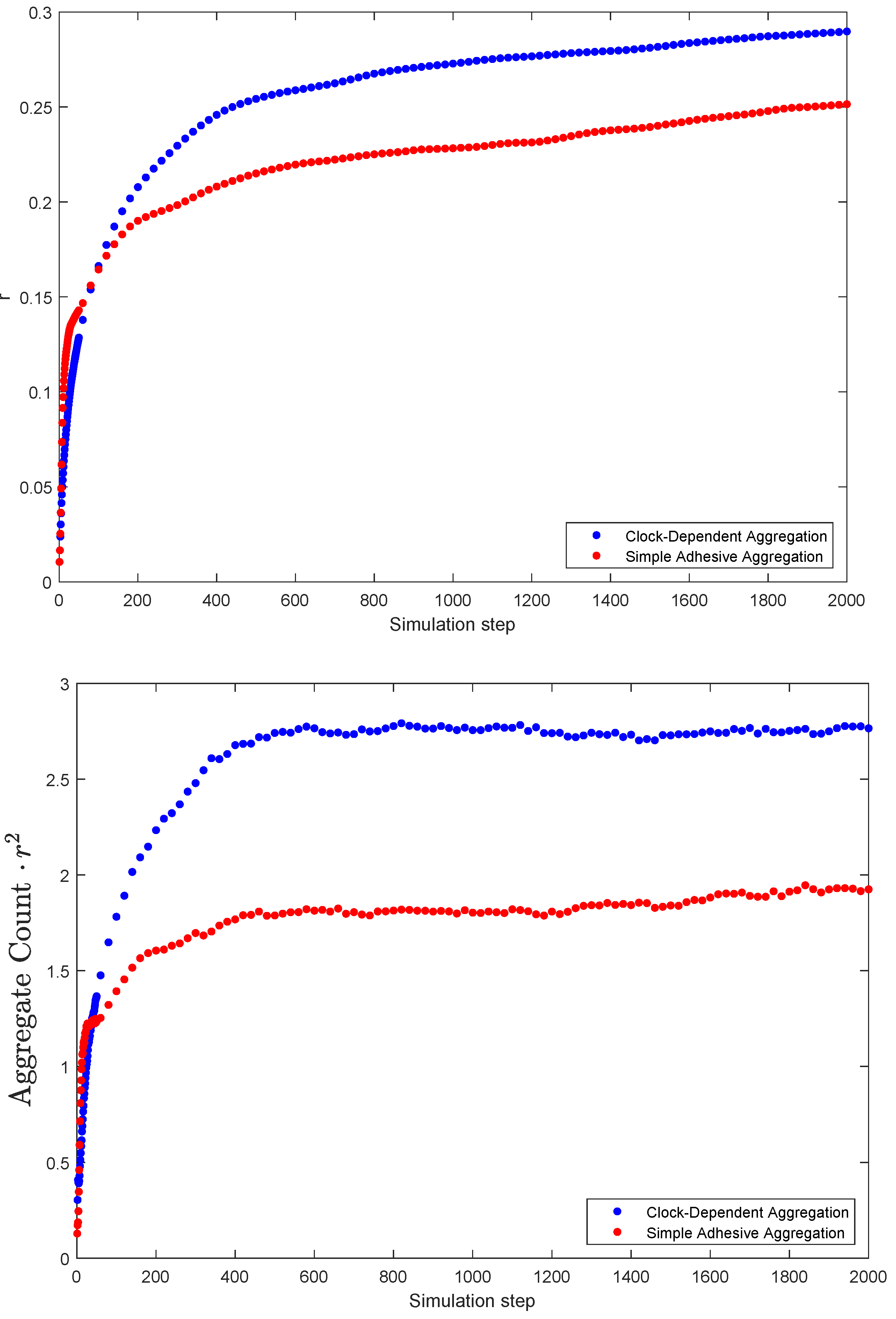
Disclaimer/Publisher’s Note: The statements, opinions and data contained in all publications are solely those of the individual author(s) and contributor(s) and not of MDPI and/or the editor(s). MDPI and/or the editor(s) disclaim responsibility for any injury to people or property resulting from any ideas, methods, instructions or products referred to in the content. |
© 2025 by the authors. Licensee MDPI, Basel, Switzerland. This article is an open access article distributed under the terms and conditions of the Creative Commons Attribution (CC BY) license (https://creativecommons.org/licenses/by/4.0/).
Share and Cite
Glimm, T.; Gruszka, D. Dynamics of the Aggregation of Cells with Internal Oscillators. Mathematics 2025, 13, 3389. https://doi.org/10.3390/math13213389
Glimm T, Gruszka D. Dynamics of the Aggregation of Cells with Internal Oscillators. Mathematics. 2025; 13(21):3389. https://doi.org/10.3390/math13213389
Chicago/Turabian StyleGlimm, Tilmann, and Daniel Gruszka. 2025. "Dynamics of the Aggregation of Cells with Internal Oscillators" Mathematics 13, no. 21: 3389. https://doi.org/10.3390/math13213389
APA StyleGlimm, T., & Gruszka, D. (2025). Dynamics of the Aggregation of Cells with Internal Oscillators. Mathematics, 13(21), 3389. https://doi.org/10.3390/math13213389





